10 Incredible Women of Route 66
Many women contributed greatly to the story and success of Route 66. Here are just ten of them, and the places where they’re recognized and celebrated.
Hazel Funk
Funk’s Pure Maple Sirup, Funks Grove, IL
Since the late 1800s, three generations of the Funk family have been making Funks Grove Pure Maple Sirup (5257 Old Route 66, 309/874-3360, 9am-5pm Mon.-Fri., 10am-5pm Sat., 1pm-5pm Sun. Mar.-Aug.). In 1948, they attached 600 buckets at the tress and made up to 240 gallons of “sirup” priced at $7 per gallon; by 2001, there were 6,400 taps producing an average 2,000 gallons of sirup each season. During the early years of Route 66, Hazel Funk owned the property. In her will she made sure the farmland would be protected by a trust for future generations, and she also wanted “sirup” spelled with an “I,” which was the Webster’s Dictionary spelling referring to a product made from boiling sap with no added sugar. Today, it remains a Route 66 landmark, and they’ve maintained the traditional spelling in honor of Hazel. The gift shop sells their legendary sirup, maple candy, T-shirts, hats, and gift boxes.
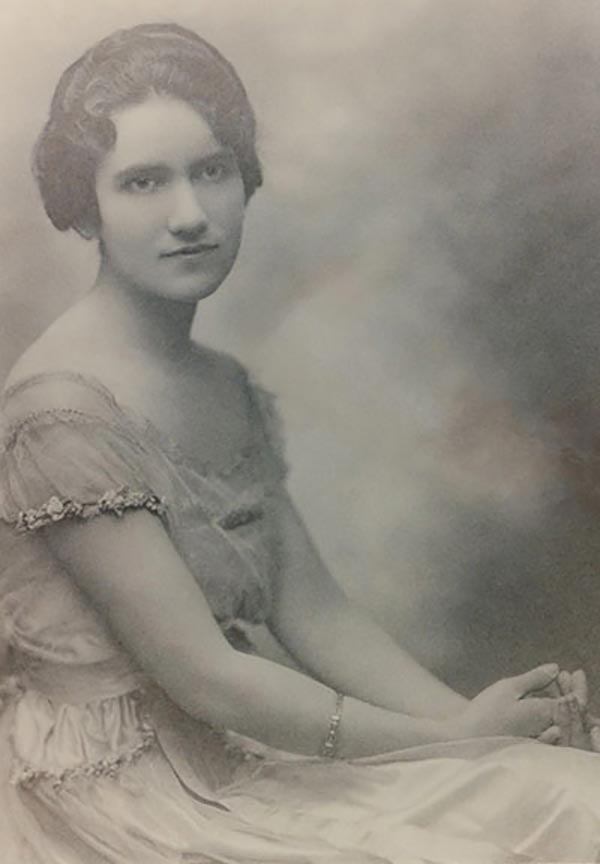
Molly Schuyler
Big Texan Steak Ranch, Amarillo, TX
Everything at the Big Texan Steak Ranch (7701 E. I-40, 806/372-6000, 7am-10:30pm daily, $15-30) is—you guessed—big. There’s a massive sculpture of a steer out front, tall Texas flags are lined up outside the building, and the interior includes a huge two-story dining room with a gift shop, a bar, a shooting range, and slot machines. The food is fine, but that’s not the main draw. This place is legendary for its free 72-ounce steak dinner. But it’s only free if you eat the entire 4.5-pound steak—with a baked potato, salad, and shrimp cocktail—in less than one hour. Since 1965, thousands have tried and failed the food challenge. One who has succeeded is Molly Schuyler, world-record holder for the fastest completion of the challenge. This 120-pound mom-of-four from Sacramento, California scarfed the entire meal down in 4 minutes 16 seconds … then ate two more, totaling three steak dinners in 20 minutes. Only in Texas.
From Route 66, travel south on State Route 87 and turn left (east) on SE 3rd Avenue. Make a right (south) on Big Texan Road and the restaurant will be on the left before I-40.
Lucille Hamons
Lucille’s Service Station, Hydro, OK
Two-story Lucille’s Service Station was built in 1929. In 1941, Lucille Hamons bought the station with her husband and made it a celebrated stop on Route 66. Then, in 1971, Route 66 moved to I-40. Despite the hardships she faced, Lucille stuck it out, working here seven days a week for 59 years until her passing in 2000. She was stubborn, resilient, and a survivor, and people called her the “Mother of the Mother Road.”
Lucille’s is only one of two stations like it on Route 66 in Oklahoma. Though the station is no longer operating, you can still admire the two large, distinctive, tapered piers that support the property, with its out-thrust porch, exposed rafter tails, and overhanging eaves in the Craftsman style. Vintage gas pumps sit outside, and the owner’s living quarters were upstairs. Lucille’s is located 0.5 mile west of Highway 58 to the right (north) of Route 66.
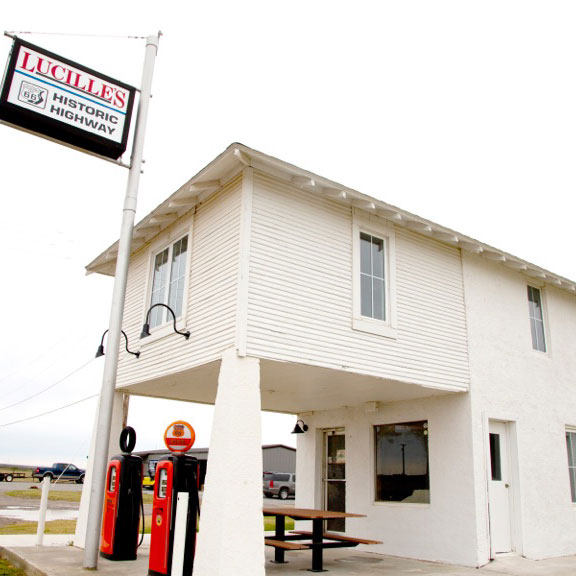
Zelta Davis
Blue Whale, Catoosa, OK
The Blue Whale (2680 N. Hwy 66, 918/694-7390) is a quirky roadside attraction built in 1972 by zoologist Hugh S. Davis. Davis was 60 years old when he came up with the idea. He used more than 1,200 feet of pipe, 126 sacks of concrete, almost 20,000 pounds of rocks, and 15 tons of sand to build it over the two years it took to complete. Davis unveiled the whale as an anniversary gift for his wife Zelta, who collected whale figurines. The Blue Whale has since seen better days, but it’s still worth a look.
Dawn Welch
Rock Cafe, Stroud, OK
When Route 66 came through Stroud in the 1920s, several businesses popped up, but the only one that remains today is the Rock Cafe (114 W. Main St., 918/968-3990, 7am-8pm daily, $8-11). Owner Dawn Welch is a powerhouse and long-time promoter of Route 66. (The character Sally Carrera in the Pixar film Cars is reportedly patterned after her.) They keep things simple at the Rock Cafe, but this place is far from predictable. You can order alligator burgers, beignets, Indian fried rice, chicken and waffles, and German favorite “Jagerschnitzel,” a breaded and fried pork cutlet covered with creamy mushroom sauce, bacon, and onions.
Like many places on Route 66, it’s the history of this place that makes it special. The Rock Cafe opened in 1939 and has been run by women for much of its existence. In the 1940s, during World War II, the restaurant doubled as a busy Greyhound bus stop. From 1959 to 1983, it was a 24-hour restaurant run by Mamie Mayfield until she retired at age 70. When a tornado almost took it out in 1999, the National Park Service Route 66 Corridor Preservation Program stepped in and helped with a cost-share grant. When a disastrous fire happened in 2008, funding from the National Park Service and the National Trust Southwest Office helped restore this place to its former glory. Hopefully this is just one of those places that will never die.
Annabelle Russell
Sandhills Curiosity Shop, Erick, OK
Sandhills Curiosity Shop (201 S. Sheb Wooley Ave.) was one of the places Pixar producers went while researching the film Cars; it’s a good, old-fashioned junk shop with early 20th-century oak furniture, artwork, and vintage musical instruments. Owner Annabelle Russell and her husband Harley had a wacky music act called the “Mediocre Music Makers.” They wrote more than 300 songs and performed them for anyone who stopped by. Annabelle passed away in 2014 after a three-year battle with cancer; as of this writing, the shop has closed, but it is still worth seeing. The building’s exterior is covered with old road signs and vintage advertisements. Stop by and pay your respects to an amazing woman who entertained thousands of Route 66 travelers from all over the world.
The Sandhills Shop is one block south of Route 66 near 3rd Street and Sheb Wooley Avenue.
Lillian Redman
Blue Swallow Motel, Tucumcari, NM
The Blue Swallow Motel (815 Tucumcari Blvd., 575/461-9849, $70-130) opened around 1940 and is a pristine example of a pre-WWII tourist court on Route 66. Lillian Redman, the former owner of the Blue Swallow, came to New Mexico in 1915 in a covered wagon to homestead near Santa Rosa. Redman was a waitress and a cook for Fred Harvey. When she married Floyd Redman, her engagement present was the Blue Swallow. Together they served many passengers on the Mother Road; for those who couldn’t pay, they often waived the room fee. Each room portrays a copy of a letter written by Lillian Redman that states the Blue Swallow is a:
…human institution to serve people and not solely a money-making organization… We are all travelers. From ‘birth till death.’ We travel between the eternities. May these days be pleasant for you, profitable for society, helpful for those you meet and a joy to those you know.
Still in operation today, the motel features an L-shaped layout with 14 nicely restored rooms and attached garages. Rooms are decorated with 1950s furniture from the Franciscan Manufacturing Company and include chenille bedspreads, art deco accents, and rotary phones. A classic car is parked in front of the motel underneath one of the best neon signs on Route 66. The Blue Swallow’s bird-in-flight symbol harkens back to the classic sailor tattoo: When sailors saw this bird, they knew land was near.
Mary Colter
La Fonda, Santa Fe, NM
La Fonda (100 E. San Francisco St., 800/523-5002, $240-475) is a sophisticated luxury hotel in the heart of downtown Santa Fe. Located on the same site as the city’s first inn, La Fonda opened in 1922. In 1925, the building changed hands and Fred Harvey leased the property. Famed architect Mary Colter renovated the interior—adding the San Francisco street entrance and enclosing the front patio—and the site operated as a Harvey House until 1968.
Today, La Fonda is the perfect blend of old southwestern character and modern amenities. Guest rooms feature original Puebloan artwork, hand-painted furniture, luxurious bathrobes, and a nightly turndown service. The rooftop bar is a wonderful place to have a drink and watch the sunset, and the 1920s patio still has the original skylights, terra-cotta tiles, and hand-stamped chandeliers. The Fred Harvey Package includes breakfast, two passes to the History Museum, and an autographed copy of Appetite for America, by Stephen Fried.
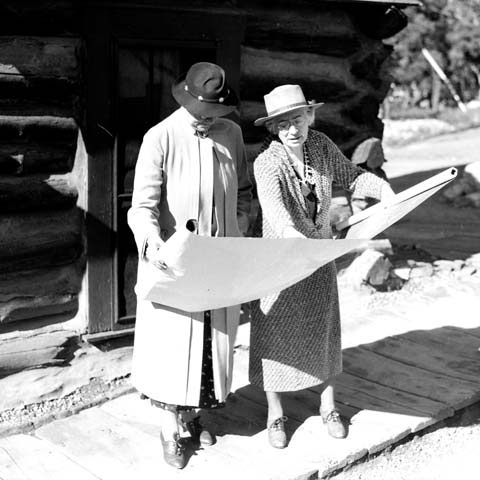
La Posada Historic District, Winslow, AZ
For an unforgettable experience, go to La Posada Hotel & Gardens (303 E. 2nd St., 928/289-4366, $119-169). The hotel is a stunning Harvey House designed by Mary Colter in 1929. This 11-acre Spanish Colonial property was the favorite project of this head architect for Fred Harvey and one of the most important female architects in the early 20th century. Most Americans at the time valued European culture and design; however, Colter felt that the southwestern style rooted in Native American, Spanish, and Mexican influences was undervalued and ignored. Colter loved the look of the great Spanish and Mexican haciendas in the Southwest, which inspired the design of La Posada.
La Posada opened during the Depression, which is mainly why it never prospered. The hotel and restaurant closed in 1957, and the Santa Fe Railway used it for office space until 1994. Soon after it was slotted for demolition, but thankfully, Allan Affeldt purchased the property and took on a $12-million-dollar renovation transforming it into a magical place and one of the crown jewels of Route 66.
If you can’t stay the night, purchase the souvenir guide and walking tour map ($3) at the gift shop. Stroll the art gallery, flowering gardens, see the world’s largest Navajo rug, and browse the gift shop for Fred Harvey jewelry, kachinas, textiles, iron, tinwork, and pottery.
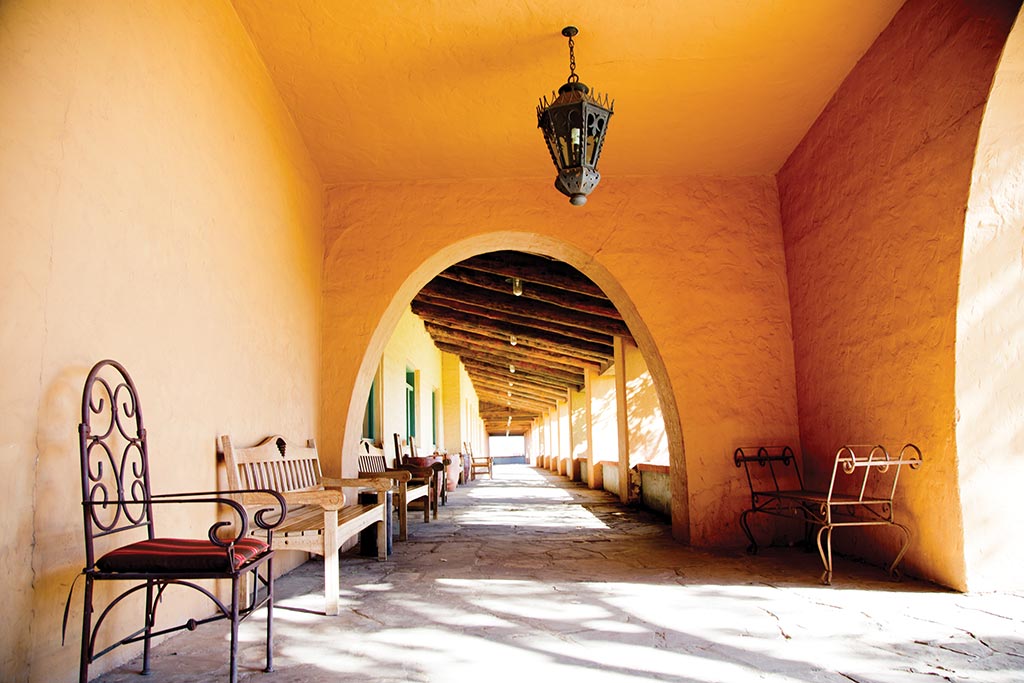
Olive Oatman
Oatman, AZ
Heading west on Route 66, tight hairpin curves lead to Oatman, a mining town named after Olive Oatman. The legend states that, at the age of seven, Olive Oatman was kidnapped and enslaved by Apache—but it’s more likely that she was taken by the Tolkepayas (Western Yavapai) tribe and sold to the Mojave, who then tattooed her chin. Some sources report that the chin tattoo was the mark of a slave; others believe that most of the women in this tribe received blue cactus chin tattoos as a way to identify them as Mojave in the afterlife. In 1857, when she was 19, authorities at Fort Yuma rescued Olive, trading her for blankets, beads, and a white horse.
Today Oatman is a gold rush town with plank sidewalks and wild burros roaming Route 66, blocking traffic and shaking down tourists for treats. (The burros are direct descendants of those the miners brought to the area in the late 1800s.) From 1908 to 1915, Oatman was a bustling town with 20 saloons within a three-block radius, more than 10,000 people, and two gold mines worth more than 25 million dollars. (By comparison, Kingman at that time had a population of about 300 people.) In 1941, gold-mining operations were halted by the U.S. government, as metals other than gold were needed for the war effort.
With the closing of the mines, Oatman’s population dwindled from 10,000 to 200. As the railroad community also began to decline, a spring about 5 miles away ceased being used to water the trains. To avoid the tortuous hairpin curves along the mountain road, a new alignment of Route 66 was rerouted in 1952 via I-40. After the gas station shut down, the population dwindled to three people and remained that way for 30 years. It wasn’t until the late 1970s, when a Route 66 organization promoted the original Route 66 alignment that the town came back to life.
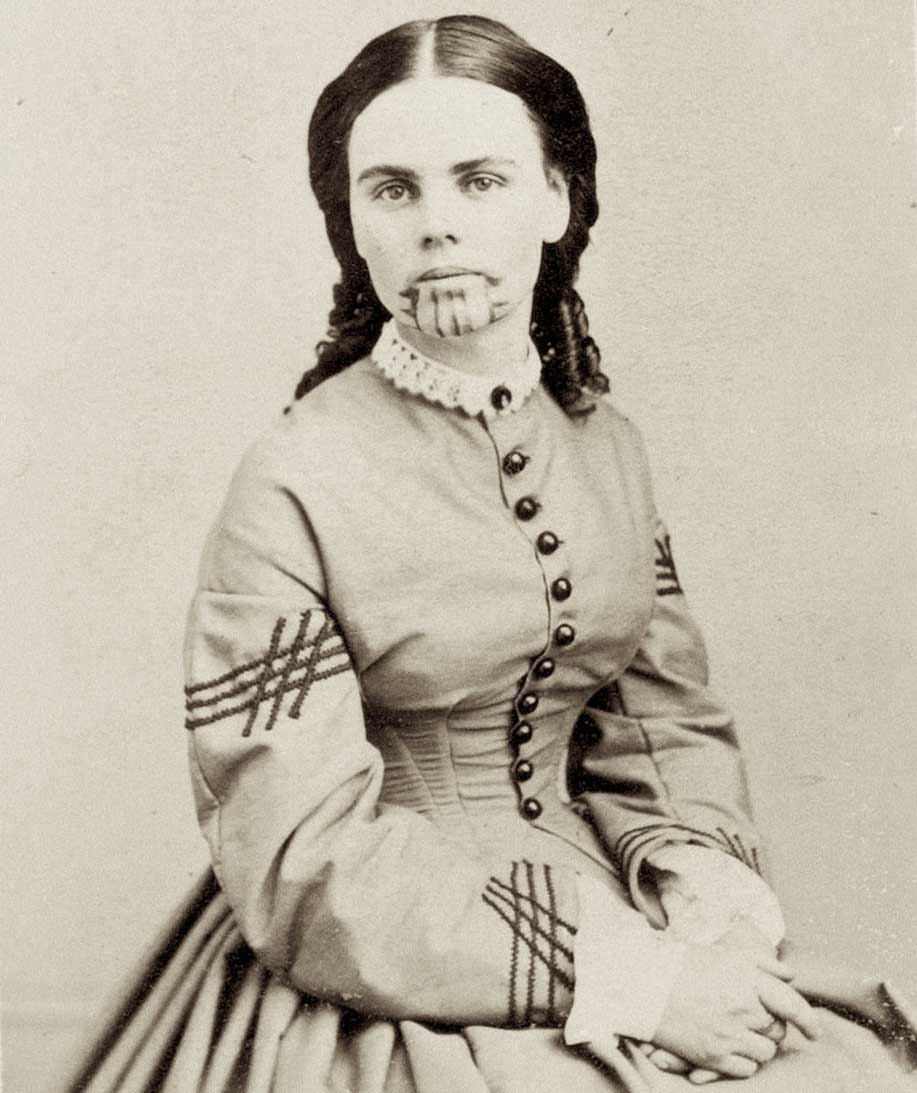
Madonna of the Trail
Albuquerque, NM and Upland, CA
If following Route 66’s pre-1937 alignment, you’ll drive into town along 4th Street. At the corner of Marble Avenue, look for the 18-foot tall Madonna of the Trail statue. This monument of the Mother Road was dedicated to pioneer women who traveled the National Old Trails. There were 12 installed; this one is identical to the one in Upland, California.

To learn more about women’s experiences on Route 66, visit the website The Women on the Mother Road where you can find oral histories, archival photos, and filmed interviews about over seventy-five diverse women. Writer and project director Katrina Parks is working on a documentary film, with the help of a grant from the National Park Service Route 66 Corridor Preservation Program, to showcase the historical impact and cultural significance of women to this iconic American travel route.